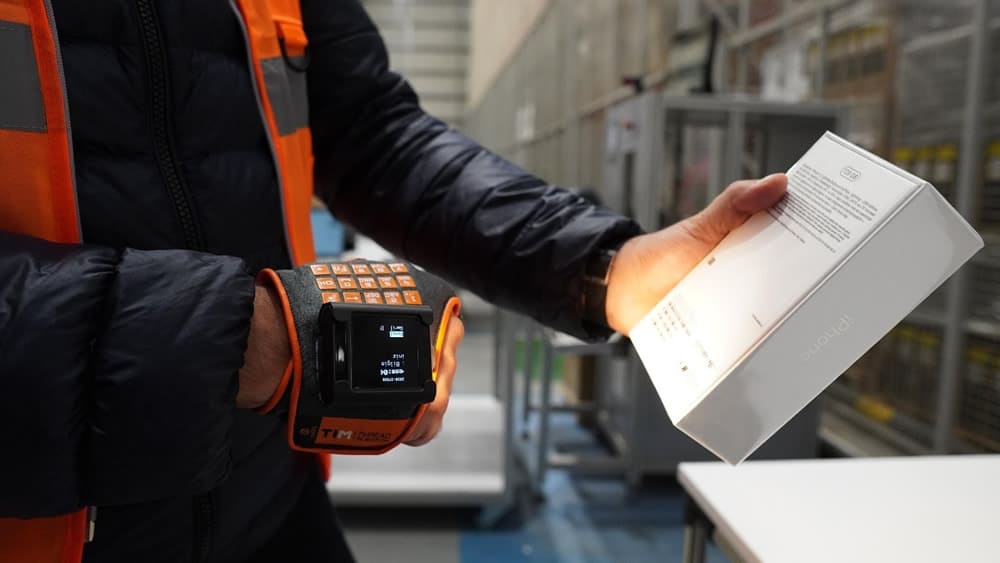Wearable Technologies Dictionary | Learn About Wearables and IoT
It’s always difficult to catch up with the trends in fast-paced environments and industries like the IoT. From wearables to high-end systems in the...
3 min read
 Zeynep Topkar
:
May 12, 2023 3:41:53 PM
Zeynep Topkar
:
May 12, 2023 3:41:53 PM
The Industrial Internet of Things (IIoT) has transformed the way businesses operate. By leveraging sensors, cloud computing, and advanced analytics, IIoT has created new opportunities for optimization and efficiency across the supply chain. One of the most promising developments in IIoT is the use of wearable devices.
Wearable IIoT technology provides real-time monitoring and analysis of your operations, which can help you make better decisions and improve efficiency.
In this article, we'll explore the benefits of wearable IIoT in more detail and discuss how it can add value to your business.
4. Enhanced Customer Experience
RELATED:
WEARABLE TECHNOLOGIES DICTIONARY | LEARN ABOUT WEARABLES AND IOT
Safety is a top priority in industrial settings, and wearable IIoT devices can help you monitor your employees' health and safety in real-time. Wearables like smart helmets, safety glasses, and vests can detect potential hazards such as falls, elevated temperatures, or harmful gases and alert the employee and the supervisor.
This ensures that safety issues are addressed immediately, reducing the risk of injuries and promoting a safe working environment.
For instance, wearable safety devices can detect when a worker falls and alert the supervisor, who can quickly respond and provide assistance. Wearable devices can also monitor workers' vital signs and detect if they are experiencing heat exhaustion or dehydration, allowing for quick intervention before the condition worsens.
Wearable IIoT devices can also help you improve operational efficiency by monitoring the performance of your machinery and equipment in real-time.
By identifying issues before they become major problems, you can reduce downtime, increase productivity, and improve overall efficiency. Wearable sensors can detect equipment malfunctions, predict maintenance needs, and optimize workflows.
Wearable devices can track equipment usage and send alerts when equipment is not being used efficiently or when it needs maintenance. This can help you optimize your maintenance schedules, reduce downtime, and improve equipment utilization.

Reducing the time spent per task is the key point of increasing efficiency; and that's what IIoT solutions do.
Wearable IIoT devices can help your employees become more productive by providing real-time access to data and analytics.
Wearable devices like smart glasses or smartwatches can display real-time inventory levels, production schedules, and other critical information, allowing employees to make better decisions and work more efficiently.
This can lead to increased productivity, reduced waste, and higher profitability.
For example, wearable devices can provide workers with real-time inventory information, helping them locate items quickly and reduce time spent searching for materials.
Wearable devices can also provide workers with real-time updates on production schedules, allowing them to adjust their work accordingly and ensure that deadlines are met.
RELATED:
DO SMART WEARABLES INCREASE PRODUCTIVITY?
By using wearable IIoT devices, you can provide a better customer experience. Wearable devices can provide real-time data on order fulfillment, delivery status, and other critical information that can improve customer satisfaction.
This level of transparency and accuracy can help you build a loyal customer base and differentiate yourself from competitors.
For instance, wearable devices can track the location of delivery trucks and provide customers with real-time updates on their delivery status. This can help you provide a better customer experience and increase customer satisfaction.
Wearable IIoT devices can also help you improve the sustainability of your operations by decreasing the time, money, and effort that is necessary.
By reducing the amount of paper and other disposable materials required during the operational chain, eliminating unnecessary tasks, and saving time, wearable IIoT can definitely contribute to making your facility and operations more sustainable and eco-conscious.
RELATED:
5 THINGS THAT WILL MAKE YOUR SUPPLY CHAINS MORE SUSTAINABLE
Another benefit of wearable IIoT devices is their ability to enable predictive maintenance.
By monitoring the performance of equipment and machinery in real-time, wearable sensors can detect early signs of wear and tear, identify potential faults, and predict maintenance needs. This enables businesses to address issues before they become major problems.
In conclusion, the benefits of using wearable IIoT technology in industrial settings are numerous and significant.
By enhancing safety, improving efficiency and productivity, enhancing the customer experience, promoting sustainability, and enabling remote work, wearable IIoT devices can add value to your business and provide a competitive edge.
By adopting this technology, businesses can improve their bottom line, build a more sustainable future, and create a better workplace environment for their employees.
As technology continues to evolve, businesses can expect to see even more advanced and innovative solutions that can further optimize their operations and drive growth.
If you're considering implementing wearable IIoT technology in your business, it's essential to partner with a reputable provider who can offer tailored solutions to meet your specific needs.
By doing so, you can take advantage of the opportunities that wearable IIoT devices provide and realize the full potential of this technology. The possibilities for wearable IIoT technology are endless, and it's up to businesses to explore the potential applications and embrace this new era of innovation and optimization.
It’s always difficult to catch up with the trends in fast-paced environments and industries like the IoT. From wearables to high-end systems in the...

Over the past decade, the use of wearable devices has spread through a number of industries. Wearable devices could help the IIoT achieve massive...

People are encouraged to focus on ways to optimize these processes as goals such as minimizing tag time in production processes, being able to output...